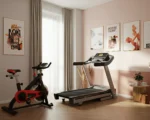Among the plethora of bodyweight exercises, the dragon flag reigns supreme for challenging your core strength and stability. Made famous by martial artist Bruce Lee, this advanced move is a testament to raw athleticism and control. Whether you’re an aspiring athlete, a trainer, or a fitness enthusiast, mastering the dragon flag can elevate your workout game and impress onlookers at the gym.
What Is the Dragon Flag Exercise?
The dragon flag is a bodyweight exercise where you support your body on your upper back and shoulders while raising and lowering your straightened legs and torso in a controlled motion. It’s a comprehensive movement targeting your core, but it also engages your lats, glutes, and hip flexors.
Unlike traditional core exercises, the dragon flag doesn’t just develop the six-pack. It trains the deeper muscles in your core that stabilize your entire body. It’s the ultimate display of strength, balance, and control.
Benefits of the Dragon Flag
Before we get into the mechanics, let’s explore why you should incorporate the dragon flag into your fitness routine:
- Ultimate Core Strength: It’s one of the most challenging exercises for your core, working both the superficial and deep muscles.
- Functional Stability: The controlled motion builds stability, helping you excel in sports and prevent injuries.
- Improved Upper Body Strength: Beyond your core, the exercise also strengthens your shoulders, lats, and grip.
- Aesthetic Gains: No surprise here—it helps sculpt and define your midsection.
- Adaptability: Once mastered, variations like the negative hold or advanced lever make it easy to scale your workouts.
Step-by-Step Guide to the Dragon Flag Exercise
Be warned, this isn’t a move for beginners! Make sure you’ve built a solid foundation of core strength before attempting the dragon flag. Here’s a breakdown of how to perform it correctly:
Step 1: Warm Up
Before attempting the dragon flag, ensure your muscles are warm and prepped. A 5-10 minute dynamic warm-up focusing on your core and upper body is ideal. Try planks, hollow holds, and leg raises as part of your routine.
Step 2: Find Your Setup
You’ll need a stable surface like a workout bench or the edge of a sturdy gym mat. Lie down flat with your head near the edge. Grip the bench or mat securely behind your head to stabilize yourself.
Step 3: Engage Your Core
Flatten your back against the surface and engage your core muscles. Think of pulling your belly button inward toward your spine. This will ensure a stable base for the movement.
Step 4: Lift Your Legs and Torso
Keeping your body straight, lift your legs and torso toward the ceiling. Your shoulders and upper back should remain in contact with the surface while your core does the heavy lifting.
Step 5: Lower with Control
Slowly lower your legs and torso until they’re just above the surface, keeping your body in a straight line. Avoid arching your back or letting your hips sag. The movement should be smooth and controlled.
Step 6: Repeat
Begin with 2-3 reps per set and gradually increase as your strength improves. Quality matters more than quantity here, so focus on maintaining correct form.
Bonus Tip
If the full dragon flag is too advanced, start with easier variations like bent-knee dragon flags or negative reps. Gradually work your way up as you build strength and control.
Common Mistakes to Avoid
- Arching Your Back: This puts unnecessary strain on your lower back. Keep your core engaged throughout the movement.
- Jerky Movements: Performing this exercise too quickly reduces its effectiveness and increases injury risk. Slow and steady wins the race!
- Not Warming Up: Attempting this movement with cold muscles can lead to strain or injury.
How to Incorporate the Dragon Flag Into Your Routine
For maximum benefit, include the dragon flag as part of your core workout. Pair it with exercises like planks, hanging leg raises, and Russian twists for a comprehensive routine. Start with 2-3 sets per workout, ensuring adequate rest between sets.
A Word of Caution
While the dragon flag is highly rewarding, it’s also demanding. Avoid overtraining, and always prioritize proper form over repetitions. Consult a fitness professional if you’re unsure about your technique.
Next Steps
Are you ready to take on the dragon flag and unlock your core’s true potential? Start small, stay consistent, and watch your progress soar. For more guidance on challenging exercises and fitness programs, check out DAREBEE’s workout guides.
Master the dragon flag, and you’ll not only strengthen your core but also build mental toughness, discipline, and confidence in your fitness abilities.








